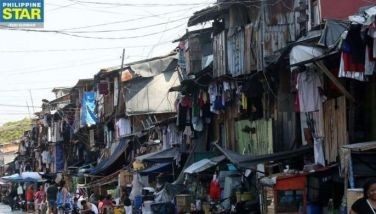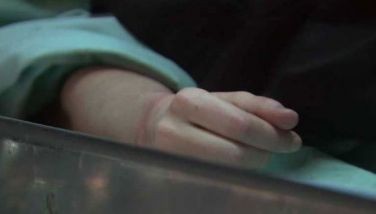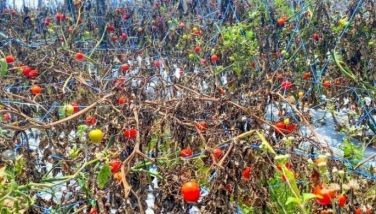GCQ for Cebu City, Mandaue City: PBB, Galvez huge factors
CEBU, Philippines — It’s final. Cebu City and Mandaue City will be under general community quarantine (GCQ) starting tomorrow, June 1, until June 15, 2020.
This was announced officially by Presidential Spokesperson Harry Roque during the Laging Handa briefing yesterday morning. The rest of Region 7 will also be under GCQ.
Also yesterday, the Inter-Agency Task Force for the Management of Emerging Infectious Disease released its resolution outlining the new quarantine classifications of local government units across the country, including Cebu City and Mandaue.
Hours earlier on Saturday dawn, the Office of the Presidential Assistant for the Visayas (OPAV) announced that IATF has granted the request of Cebu City Mayor Edgardo Labella to put the city under GCQ as opposed to the task force’s earlier recommendation to put the city under modified enhanced community quarantine, which is just one level down from ECQ.
PBB Data
The Project Balik Buhay (PBB) and National Task Force Against COVID-19 chief implementer Secretary Carlito Galvez Jr. were said to be major factors in the change of Cebu City’s quarantine status.
Labella gave credit to PBB prevalence survey for providing data that said to have helped convince IATF to downgrade Cebu City’s status to GCQ from ECQ.
“Because of scientific data-based and strategic approach of the Project Balik Buhay, we were able to identify the areas and we were able also to find out that the extent of pandemic has gone down. And that we were able to identify the only remaining areas and we can just place (these areas) under segmental lockdown,” Labella said.
Labella also thanked Secretary Galvez, the Chief Implementer of the Philippines' Declared National Policy Against COVID-19, for helping lobby for a GCQ status for Cebu City.
“We are very thankful to Secretary Galvez because he is the one who was responsible for really making the certification that they don’t just look at the numbers; they have to look at other factors,” he said.
The strategic mass testing served as a prevalence survey that identified the extent of the spread of COVID-19 in Cebu City, Mandaue City, and Lapu-Lapu. It is part of PBB, which is initiated by OPAV.
In a message to The Freeman Saturday dawn, OPAV said “the strategic rapid antibody testing and the entire PBB (Project Balik Buhay) program was a big factor when IATF-EID made the decision on the appeal of Cebu City.”
“No less than Sec. Galvez who visited Cebu last Saturday and was briefed of what tri-city were doing was the one who lobbied for GCQ for Cebu City at the IATF meeting on Friday that ended late,” OPAV said further.
In a separate statement yesterday, OPAV Secretary Michael Dino described the PBB as a “game changer.”
“The data-driven, evidence-based and scientific approach through PBB was the game changer that convinced the COVID-19 Inter-Agency Task Force for the Management of Emerging Infectious Diseases (IATF) to downgrade Cebu City to GCQ,” said Secretary Michael Dino, Presidential Assistant for the Visayas.
“With prevalence testing, local government units can now see the enemy. We are no longer fighting COVID blind by using the Reverse transcription polymerase chain reaction (rt-PCR) or rapid anti-body testing (RAT) to determine which areas have infections,” added Dino.
Cebu City has been on ECQ since March 28, 2020. As of yesterday, May 30, it has registered a total of 2,202 cases albeit also recording 958 recoveries.
Department of Health (DOH)-7 Director Jaime Bernadas said Cebu City has a critical care utilization rate of less than 70 percent but more than 30 percent, and a case doubling time of more than seven days but less than 30 days.
“These two factors would place the city in a moderate risk classification Deceleration with a continuous reduction in cases. And therefore, would warrant it to be placed in General Community Quarantine (GCQ) with the recommended action points under such classification or stage,” he said.
Mandaue City, which has a total of 242 cases as of May 29, was supposed to transition to GCQ together with Cebu Province middle of May but asked to remain under enhanced community quarantine pending results of the strategic mass testing it participated in together with Cebu City and Lapu-Lapu City.
Limitations Apply
In anticipation of people hitting the streets following the long lockdown, Labella appealed to the public to exercise self-discipline.
"We are opening kay importante man ang panginabuhi gawas sa kinabuhi pero kinahanglan we should adopt a self-discipline attitude," he said.
He said the public can help in the continued fight against COVID-19 by wearing masks, observing social distancing, to name a few.
"Let us remember that we still have to live with this virus. It is still there. We still have to be more strict… while we open, there are limitations,” he said yesterday.
Labella is set to issue an executive order that will outline the rules under the GCQ but among the limitations expected are a 50 percent capacity at workplaces, as well as curfew. The stay-at-home order for senior citizens and minors will also remain.
Malls may be open during the GCQ period but leisure venues will remain closed.
Labella said the number coding scheme and the schedule for entry of shoppers at the Carbon Public Market Complex will remain effective during the GCQ.
"Because that has been proven very effective," Labella said.
Lockdowns
Labella said segmental and sequential lockdowns in critical areas will be implemented during the GCQ period. The lockdowns, however, will be per sitio or household.
Bernadas said the segmental lockdown recommendation was arrived at following the conclusion of the strategic mass testing in Cebu City, Mandaue City, and Lapu-Lapu City.
He said the recommendation has set a case threshold for barangays and its classification and quarantine protocol (ECQ to GCQ), and when to open it up (ECQ to GCQ).
The recommendation includes several required action points for highly urbanized cities (HUC) under GCQ.
Quarantine status can be dynamic, which meant it could be a step down or step up, depending on the number of active positive COVID-19 cases, Bernadas said.
HUCs have to use disease surveillance as the key for reassessment of quarantine status of a particular barangay, sitio, block or compound placed under a quarantine status.
Other required actions include continued surveillance on enhanced influenza like illness (ILI) and severe acute respiratory infections (SARI) cases, maximizing close contact tracing efforts (trace-isolate-swab-treat), and establishing at least one isolation center per barangay and initiating COVID-19 recovery surveillance.
The recommendation also emphasized the importance of ensuring that all COVID-19 positive patients (those tested through rt-PCR or RAT) have recovered after a 14-day quarantine or home isolation (IgG+ by RAT).
HUCs area also required to analyze and update its database of COVID-19 cases using the software recommended by the DOH.
“We would like to place this conditionality to ensure that areas that have no cases and have no documented exposure (IgM positive) remain open for business with the imposition of minimum health standards recommended by the DOH,” Bernadas said.
Transportation
As far as public transport is concerned, Land Transportation Franchising and Regulatory Board (LTFRB)-7 Director Eduardo Montealto said buses, mini buses, taxis, and Transportation Network Vehicle Services (TNVS) like Grab will be available provided the vehicles have special permits from their agency.
Montealto said at least 136 buses will be deployed in Cebu City, Mandaue City, and Lapu-Lapu City.
He said buses coming from the northern parts of Cebu Province will have to stop at the designated temporary bus terminal in Consolacion town while buses coming from the south towns will stop at the designated temporary bus terminal in Talisay City.
Under the guidelines LTFRB released for places under GCQ, passenger load shall not exceed three (two passengers at the back and one passenger on the front row) and the driver compartment should be sealed off from the passenger area using non-permeable and transparent material.
Taxi and TNVS drivers are also required to wear masks and gloves at all times. Commuters are required to wear masks as the "No face mask, No ride" policy will be enforced.
Only taxi and TNVS that are holders of valid and existing provisional authority or grantees of Certificate of Public Convenience are allowed to operate. Their units must be registered currently with a valid Personal Passenger Insurance Policy. JMO (FREEMAN)
- Latest



























